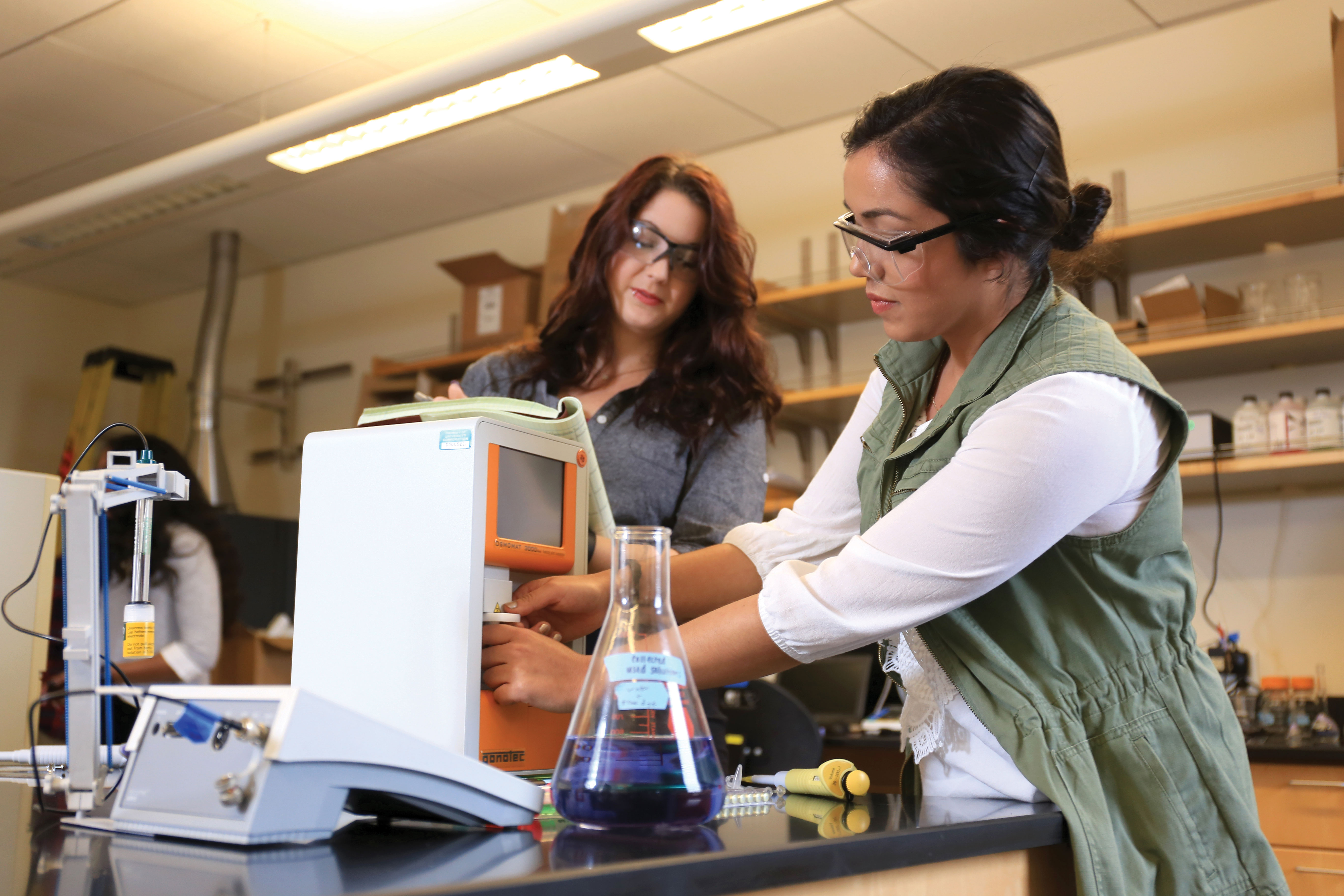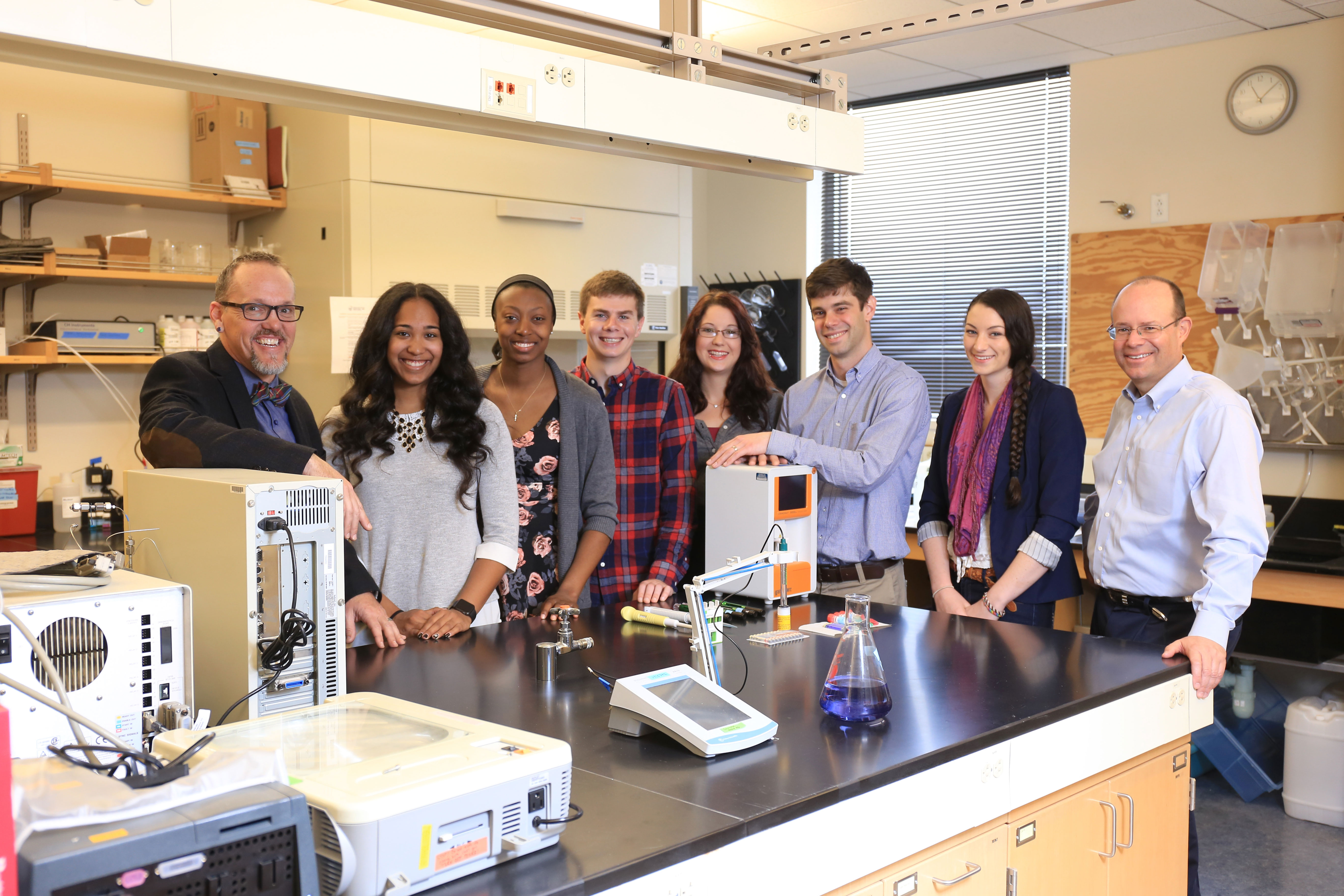CSUMB Magazine
Going to the Dentist Doesn’t Have to Bite

Remember the last time you went to the dentist?
You probably sat there, staring up at a white light while the dentist prepared to inject you with an anesthetic. Small talk was made as the shot was given. Then you waited.
Soft rock or Top 40 most likely played overhead as you lay there, waiting for the numbness to take hold. An assistant checked on you periodically. Finally, you were ready for the procedure. You crossed your fingers that the anesthetic had completely kicked in, especially before the drilling started.

Sound familiar? This scenario could be much less common thanks to chemistry professor Dr. John Goeltz, statistics lecturer Jon Detka and College of Science students at CSUMB. Along with Monterey dentist Dr. Mic Falkel, the group performed extensive research that validated the use of three additional dental anesthetics – articaine, mepivicaine and prilocaine – with a process called an Onset Buffering System, which Dr. Falkel developed. Previously, only one dental anesthetic, lidocaine, was approved to work with the buffering system.
The Onset Buffering System, used by dentists since 2011, “buffers” the anesthetic before injection by raising its pH level, which is a measure of acid-base properties in a solution. The off-the-shelf anesthetic pH level, which is 3.5, is approximately the same as lemon juice. This is why patients often feel a “burning” sensa- tion and often must wait for up to 15 minutes before the anesthetic fully kicks in. With “buffering,” sodium bicarbonate is added to the anesthetic before injection, raising the anesthetic’s pH level to 7.4 – the same level as the human body.
This means no more burning, immediate numbness and reduced failure of the anesthetic to be fully in effect before procedures start. Dentists can start working immediately, never leaving the patient. Everything stays on schedule. Patients are more comfortable.
In short: happier, more efficient dentists and happier, less traumatized patients.
According to Dr. Goeltz, the research project was invaluable for his students. Over the course of about a month, the six students worked in a CSUMB lab to buffer the anesthetics using the Onset technology and then immediately measure the resulting pH levels and osmolality, which is a measure of “saltiness” in a solution.

The pH values were measured directly in separate glass vials that contained each of the three dental anesthetics. A pH indicator dye was then added to each vial. Each vial was measured by a spectrometer, a lab tool that determines the color of the sample and allows calculation of the pH. The osmolality data were collected using a separate instrument. “The students gathered hundreds of reliable data points in a very short time frame,” Dr. Goeltz said. “They demonstrated great leadership and teamwork.”
The resulting data was then analyzed by the students, Dr. Goeltz and Detka, one of CSUMB’s resident experts in statistics. That output enabled best-use recommendations and validated the three anesthetics for the buffering system and a more comfortable experience for patients in the dentist chair.
“The project was an extraordinary opportunity to take fundamentals of chemistry and apply them to real-life research and problem-solving in medicinal science,” Dr. Goeltz said. All six of the students are undergraduates with various majors in the College of Science. A chemistry major does not exist at CSUMB, at least not yet.

The research performed at CSUMB will have amazingly broad implications for thousands of dentists and their patients, according to Dr. Falkel, who invented the buffering technology and has practiced dentistry on the Monterey Peninsula for more than 25 years.
“The process and the result ended up being a win-win situation. I sought out CSUMB for this research, I wanted to keep it close to home,” Dr. Falkel said. “I think the world of John and his students. If I needed to do further research, I would go straight back to CSUMB.”